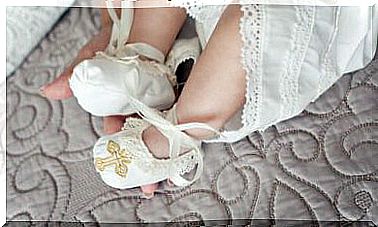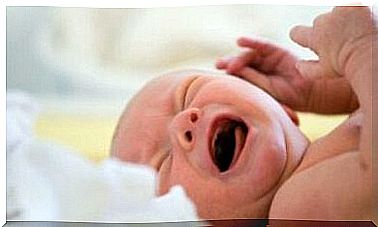The Parachute Reflex: An Important Phase Of The Child’s Development

The reflexes of newborns are produced as a motor response to the presence of certain stimuli. They are the main feature of a developing nervous system.
These typical newborn responses tend to appear in the first few months of life and go away when the brain is formed or mature. The most common reflexes are that of sucking, that of the march or dark and another not very well known but equally important: the parachute reflex.
What does the parachute reflex consist of?
It is a protective response that appears around the 5 months of the baby ‘s life. This reflex is observable when the infant is taken by the armpits in an upright position and turns quickly, as if throwing himself on a surface.
The motor response will consist of extending the arms to prevent the fall. This reflex is maintained throughout life.
Why does the parachute reflex occur in the newborn?
The parachute reflex is found between archaic or primitive reflexes. These are driven by the central nervous system and promote survival during the first year of life.
Archaic reflexes begin during conception and develop into movements specific to each age. Consequently, these reflexes occur through the action of stimuli from the outside world. That is, they correspond to involuntary movements that disappear over time.

How to determine if a newborn develops the parachute reflex?
The best way to examine the evolution of your baby’s reflexes is through a month-to-month consultation with your pediatrician. Despite this, you can check if your child develops the parachute reflex by observing that he exhibits these reactions:
- Have the child come down vertically to a surface where he can rest his feet and body. With this exercise you will observe an immediate position of extension, distancing and slight outward rotation of the legs. It is easily identifiable from the fifth month of life.
- Lateral parachute reflex. Place the child in a sitting position so that the ends are dangling. Carefully push it gently to one side and watch as the arm on this side rapidly reaches out to try to touch the surface and avoid falling. It is a detectable reflex around the sixth month of age.
- The frontal reaction is observed when the child is pushed forward and he quickly extends his arms to protect himself from falling. This level of the parachute reflex is usually observed between the seventh and eighth months.
- Another protective response of the child is when the child is pushed backwards and the child tends to lean and stretch his shoulders to the rear, with his arms and wrists tense.
Regularly assessing the presence of these reflexes in the child will give you an idea of the evolution of the child’s nervous and motor systems, and will allow you to ascertain any signs of developmental delay.
Absence or deficiency of reflexes in infants
The absence of the various reflexes that the newborn possesses can be a consequence of a neurological lesion or a weakness of the motor system. These pathologies present themselves with the following characteristics:
- Children who lie down and cannot sit upright.
- Reduced muscle tone which is evident in the lack of coordination, with consequences such as crashing, falling and staggering from side to side.
- Difficulty concentrating or staring. For example, when watching television. A complication of this condition is the difficulty in learning in school age.
- Inability to control the sphincters.
- Inability to develop fine motor skills, including the ability to use the hands, even to eat.
- Infants with nervous, fearful or highly dependent attitudes.

Recognizing these conditions in time can suggest the inclusion of therapies that favor the development of these reflexes, or rather the abilities of the child’s age.
An excellent alternative can be the inclusion of games and movements that simulate the involuntary responses of the organism in an automatic way.
In summary, the presence of these reflexes in a newborn guarantees proper nervous and motor development. Watching for them to appear and disappear when they should will greatly contribute to your baby’s health.









